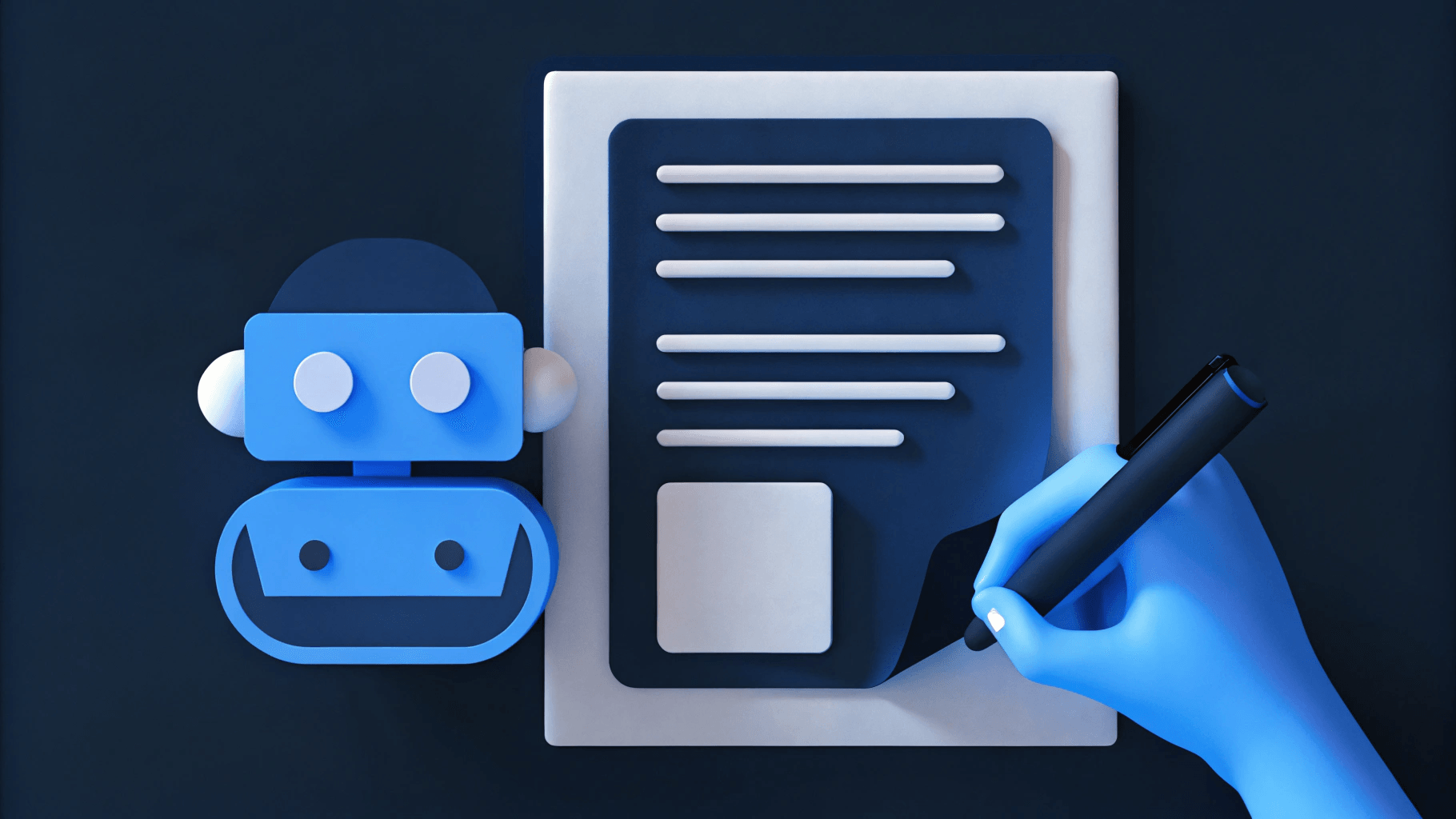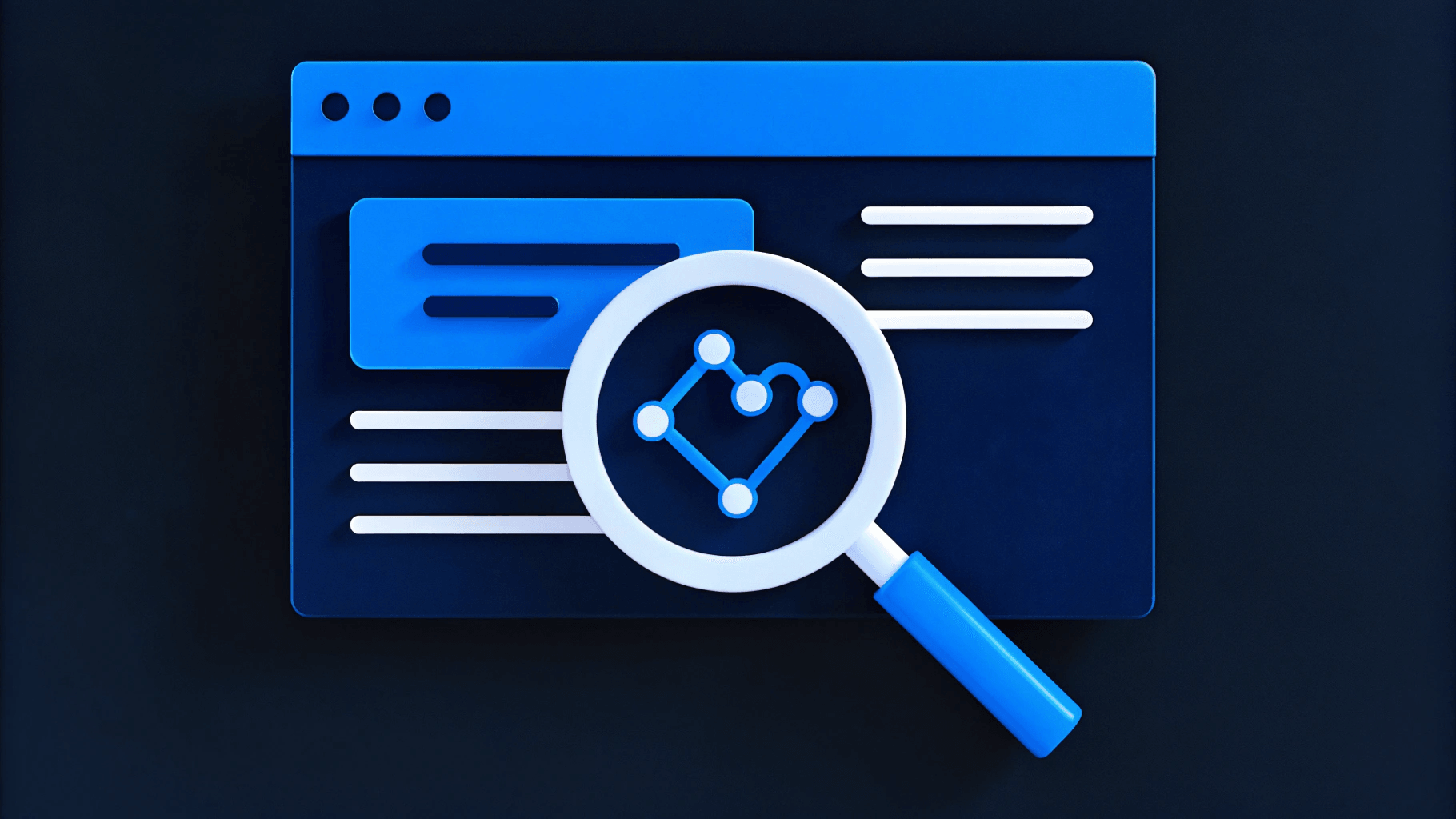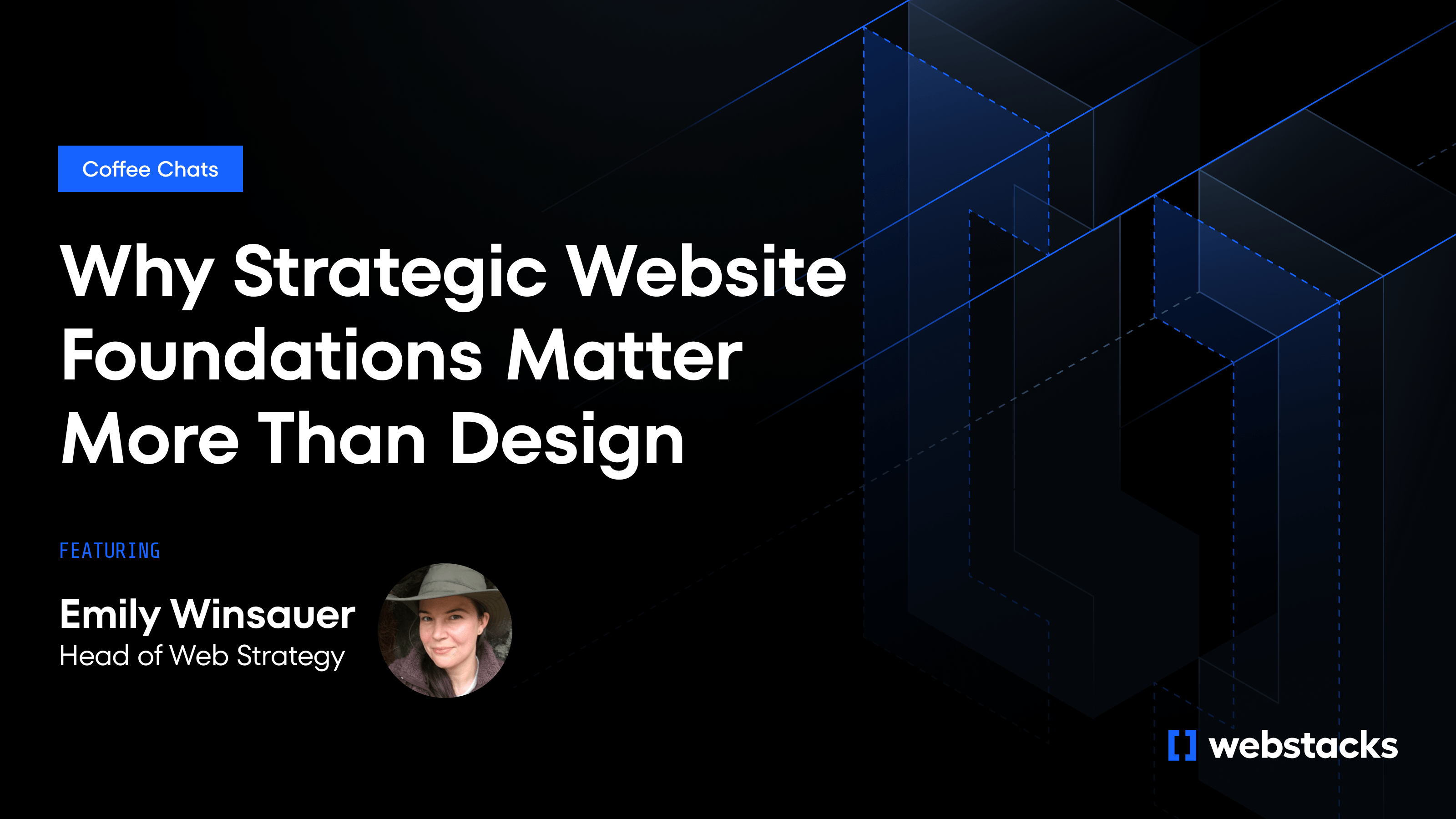The promise of AI-powered content creation is compelling: produce more thought leadership, faster, without expanding headcount. Scale your expertise across channels, formats, and audiences with minimal manual effort. But speed without strategy creates a new problem—content that sounds informed but lacks the originality, perspective, and credibility that defines real thought leadership.
The market is flooded with AI-generated content. Articles that follow predictable structures, echo familiar talking points, and offer surface-level analysis. This creates noise, not authority. B2B buyers can detect when content is templated or lacks genuine expertise. The result? Diminished trust and weakened differentiation.
The strategic question for B2B leaders isn't whether to use AI in content production—it's how to use it without becoming indistinguishable from competitors. AI can elevate thought leadership when it amplifies human insight rather than automating it. Teams that balance automation with authenticity will create content that scales efficiently without sacrificing credibility or connection.
This article examines where AI adds value in the thought leadership process, where it falls short, and how to integrate AI into content workflows without losing the strategic perspective and authentic voice that make thought leadership effective. We'll also share how Webstacks approaches AI-augmented content strategy for B2B brands building authority in competitive markets.
What Makes Thought Leadership Valuable (And Why AI Alone Can't Deliver It)
Effective thought leadership does more than inform—it positions your brand as a category authority by offering perspectives competitors can't replicate. It's not about volume or visibility alone. Thought leadership builds trust by demonstrating depth, originality, and strategic insight grounded in real-world experience.
The Core Elements of Effective Thought Leadership
Not all content qualifies as thought leadership. The term has been diluted by overuse—applied to anything from basic explainer posts to lightly researched trend summaries. But genuine thought leadership serves a specific purpose: it establishes your brand as a credible authority by offering perspectives that competitors can't easily replicate.
Four qualities distinguish genuine thought leadership from content that simply fills space.
Original Perspective Grounded in Real-World Experience
The most compelling thought leadership draws from proprietary insights: client outcomes, operational frameworks, or product learnings that only your organization can provide. It's not a summary of industry trends—it's your interpretation of what those trends mean for your audience and how to act on them.
Strategic Point of View That Challenges Assumptions or Reframes Problems
Thought leadership takes a stance. It identifies gaps in conventional wisdom, proposes alternative approaches, or clarifies misunderstood concepts. This requires judgment and conviction—qualities AI can't generate on its own.
Evidence-Based Arguments Supported by Proprietary Data, Case Studies, or Client Outcomes
Data without context is noise. Thought leadership connects evidence to strategic conclusions, using real examples to illustrate abstract concepts and validate recommendations.
Authentic Voice That Reflects Company Values and Expertise
Readers connect with content that feels human. Voice isn't just tone—it's the personality, perspective, and values embedded in how you communicate. Consistency in voice signals credibility and builds familiarity over time.
Where AI Falls Short
AI generates derivative content based on patterns in existing material. It synthesizes what's already been said, rearranges familiar arguments, and produces text that mirrors the training data it's learned from. Without strategic direction, AI outputs generic takes that echo competitor messaging rather than differentiate from it.
AI lacks the context to tie tactical recommendations to business outcomes or brand positioning. It can't determine which industry debates matter most to your audience, which contrarian perspectives are worth staking a claim on, or how to balance boldness with credibility. It doesn't know your clients, your operational challenges, or the insights only your team possesses.
The Risk of Automation Without Strategy
Over-reliance on AI creates sameness. Predictable structure, familiar phrasing, surface-level analysis. Content that sounds authoritative but lacks substance erodes trust. B2B buyers are sophisticated—they recognize when content is templated, when examples are hypothetical rather than real, and when strategic recommendations lack grounding in lived experience.
Thought leadership without differentiation fails to position your brand as a category leader. If AI enables every competitor to produce more content faster, volume alone won't create a competitive advantage. The brands that stand out will be those that use AI strategically—to amplify human insight, not replace it.
Where AI Adds Real Value to Thought Leadership
AI doesn't replace the strategic thinking that defines thought leadership, but it removes friction from content creation and scales execution. When deployed intentionally, AI accelerates research, drafting, optimization, and distribution—freeing strategists to focus on the high-value creative work that differentiates your content.
1. Accelerating Research and Data Synthesis
AI excels at processing large volumes of information quickly. Tools like Perplexity, ChatGPT, and Claude can scan competitor content, industry reports, and trend analyses to surface patterns, identify gaps, and extract key data points. This reduces research time from days to hours, allowing strategists to focus on interpretation rather than information gathering.
For example, AI can summarize a dozen competitor blog posts on a topic, highlight recurring themes, and flag areas where your perspective could add value. It can pull relevant statistics from analyst reports, synthesize findings from multiple sources, and organize raw data into structured summaries. This doesn't eliminate the need for human analysis—it simply gets strategists to the interpretation phase faster.
2. Generating First Drafts and Outlines
AI can structure arguments, organize sections, and draft introductory paragraphs based on strategic briefs. This is useful for translating executive insights or interview transcripts into readable content. Instead of starting from a blank page, writers begin with scaffolding—a logical framework they can refine, expand, and inject with proprietary insight.
AI-generated outlines ensure consistency in structure across content series. They provide a starting point that reduces friction in the drafting process, enabling faster iteration without sacrificing depth. The key is treating AI output as raw material, not finished content.
3. Optimizing for Clarity and Readability
AI tools can identify jargon, overly complex sentences, or ambiguous phrasing. They help ensure content is accessible to target personas without sacrificing depth. This is particularly valuable for technical topics where subject matter experts write with insider language that may alienate non-specialist readers.
AI can also support editorial consistency across large content volumes. It flags tone inconsistencies, suggests simpler phrasing, and highlights areas where arguments lack clarity. This doesn't replace human editorial judgment—it supplements it by catching issues that might otherwise slip through.
4. Repurposing and Reformatting Content
AI can transform long-form thought leadership into social posts, email sequences, or presentation decks. This enables multichannel distribution without duplicating manual effort. A single pillar article can become a LinkedIn carousel, a Twitter thread, a newsletter excerpt, and a webinar script—all adapted for format and audience without starting from scratch.
This maintains message consistency while adapting tone and structure for different channels. AI handles the mechanical work of reformatting, allowing strategists to focus on ensuring each adaptation retains strategic value and brand voice.
5. Scaling Operational Tasks
AI can automate metadata creation, generate SEO-optimized titles, and suggest internal linking opportunities. It reduces administrative burden, freeing strategists to focus on high-value creative work. These operational efficiencies compound over time, enabling teams to produce more without proportionally increasing headcount.
AI accelerates execution and scales distribution. It doesn't replace strategic thinking, but it removes friction from the content creation process. The challenge is knowing where to draw the line—where human judgment remains non-negotiable.
The Human Role: What AI Can't Replace
AI handles execution well, but thought leadership requires strategic judgment, proprietary insight, and authentic voice—qualities AI can't generate independently. The most effective content workflows use AI to remove friction while preserving the human elements that create differentiation and credibility.
1. Strategic Perspective and Positioning
Only humans can define your brand's unique point of view. AI can't determine which industry debates to engage with, which contrarian positions are worth staking a claim on, or how to differentiate from competitors. Thought leadership requires taking a stance—something AI can't do without human direction.
Strategic perspective comes from understanding your market, your audience's pain points, and the gaps in existing discourse. It requires judgment: knowing when to challenge conventional wisdom, when to provide clarity on misunderstood concepts, and when to introduce frameworks that reframe how buyers think about problems.
2. Proprietary Insights and First-Party Data
The most compelling thought leadership draws from internal experience: client case studies, product learnings, or operational frameworks. AI has no access to these insights unless humans provide them. Authenticity comes from sharing what only your organization knows.
Proprietary data—whether from client outcomes, internal research, or operational metrics—creates differentiation. These insights can't be replicated by competitors because they're unique to your experience. AI can help structure how you present these insights, but it can't generate them.
3. Nuance, Judgment, and Context
AI lacks the ability to assess when to push boundaries, when to challenge assumptions, or when to hedge. Humans understand the risks of oversimplification or the value of contrarian positions. Thought leadership often requires reading between the lines—understanding what's unsaid, interpreting ambiguous signals, and making judgment calls about how aggressively to position an argument.
Context matters. The same recommendation might be appropriate for one audience segment but irrelevant or risky for another. AI can't make these distinctions without explicit instruction. Humans bring the situational awareness that ensures content resonates with the intended audience.
4. Voice, Tone, and Brand Identity
AI can mimic style, but it can't embody brand values or create an authentic voice. Readers connect with content that feels human—AI-generated text often lacks personality, warmth, or the subtle markers of expertise that build trust.
Consistency in voice requires editorial oversight, not just adherence to a style guide. Voice is how your brand sounds across contexts—how you explain complex concepts, how you address audience objections, and how you balance confidence with humility. This requires human judgment at every stage.
5. Ethical Oversight and Accuracy
AI hallucinates, misinterprets sources, and occasionally generates misleading claims. Humans must verify facts, validate data, and ensure content aligns with brand integrity. Thought leadership built on inaccurate information destroys credibility.
Editorial oversight catches errors, clarifies ambiguous phrasing, and ensures content reflects genuine expertise. AI can flag inconsistencies or suggest improvements, but humans are accountable for accuracy and ethical responsibility.
AI supports content creation, but humans drive strategy, provide context, and ensure authenticity. The most effective approach combines both—using AI to accelerate execution while preserving the human judgment that creates differentiation.
A Framework for Balancing AI and Human Input
The goal isn't to eliminate AI or reject automation—it's to deploy AI strategically, ensuring it amplifies human insight rather than diluting it. This requires clear roles: AI handles execution, humans drive strategy and oversight. The following framework helps teams integrate AI without compromising the qualities that make thought leadership credible.
1. Define Strategy Before Execution
Start with clear strategic goals: What perspective are you establishing? What debate are you entering? What unique insights can you provide that competitors can't?
Identify the proprietary data, client stories, or operational learnings that will anchor your content. Use AI for research and competitive analysis, but let humans define positioning. AI can help you understand what others are saying—humans decide what you should say differently.
2. Use AI for Structure, Humans for Substance
Let AI generate outlines, organize sections, and draft introductory paragraphs. This provides scaffolding without dictating substance. Humans add the unique insights, examples, and strategic framing that differentiate your content.
AI accelerates the scaffolding; humans build the architecture. Treat AI-generated outlines as starting points, not blueprints. Refine, expand, and inject proprietary insight at every stage.
3. Iterate with Human Oversight
Use AI to generate first drafts, then refine for voice, accuracy, and strategic alignment. Treat AI output as raw material, not finished content. Ensure every piece reflects genuine expertise and brand values.
This iterative approach allows teams to move faster without sacrificing quality. AI drafts reduce blank-page friction. Human editors ensure the final output meets editorial standards and aligns with strategic goals.
4. Optimize for Distribution Without Diluting the Message
Use AI to repurpose long-form content into social posts, email sequences, or presentation slides. Maintain consistency in messaging while adapting format and tone for different channels. Humans review to ensure repurposed content retains strategic value.
Multichannel distribution is essential for reaching audiences where they consume content. AI handles the mechanical work of reformatting, but humans ensure each adaptation serves a strategic purpose and preserves brand voice.
5. Maintain Editorial Standards
Establish clear review processes to catch AI-generated inaccuracies, generic phrasing, or off-brand tone. Use human editors to ensure logical flow, depth, and readability. Never publish AI-generated content without strategic and editorial oversight.
Editorial standards are non-negotiable. Every piece should meet the same bar for accuracy, clarity, and strategic alignment—whether AI was involved in drafting or not. The presence of AI in the workflow doesn't lower expectations; it simply changes how you reach them.
The best thought leadership workflows use AI for execution and humans for strategy, judgment, and authenticity. This balance enables teams to produce more without compromising the credibility and differentiation that make thought leadership effective.
How Webstacks Approaches AI-Augmented Thought Leadership
At Webstacks, we treat AI as a tool for amplifying human insight, not replacing it. We use AI to accelerate research, drafting, and distribution—but strategy and positioning remain human-led. Every piece of content reflects our proprietary frameworks, client outcomes, and strategic perspective.
Our Philosophy
AI is useful for execution. It speeds up research, removes friction from drafting, and scales distribution. But it doesn't determine what's worth saying or how to say it in a way that differentiates your brand. That requires human judgment, proprietary insight, and strategic perspective.
We use AI where it adds value: synthesizing research, generating first drafts, optimizing readability, and repurposing content across channels. We don't use it to replace the strategic thinking, client experience, or brand voice that make thought leadership credible.
Our Process
Our approach integrates AI at specific stages of content creation while maintaining human oversight at every decision point. This ensures efficiency without sacrificing the strategic depth and authenticity that define effective thought leadership.
1. Strategic Discovery
Define positioning, audience, and key insights before engaging AI. We start by understanding what makes your perspective unique, which industry debates matter most to your audience, and which proprietary insights you can share that competitors can't.
2. AI-Assisted Research
Use AI to synthesize industry trends, competitor content, and data points. This reduces research time and surfaces patterns that inform strategic positioning. AI helps us understand what's already been said—so we can identify where your perspective adds value.
3. Human-Led Drafting
Strategists and subject matter experts provide core insights and framing. AI may generate outlines or first drafts, but humans inject proprietary frameworks, client case studies, and strategic perspectives. The substance comes from lived experience, not pattern recognition.
4. AI-Powered Optimization
Use AI to refine structure, improve readability, and scale distribution. AI helps ensure content is clear, accessible, and formatted for different channels. This amplifies reach without diluting the message.
5. Editorial Review
Ensure accuracy, voice, and strategic alignment before publication. Every piece undergoes human review to verify facts, catch off-brand phrasing, and confirm the content reflects genuine expertise. AI accelerates production—humans ensure quality.
What This Looks Like in Practice
We might use AI to draft outlines for a composable architecture thought leadership series, providing structure and logical flow. But the proprietary frameworks, client case studies, and strategic perspective come from our team's direct experience with enterprise web projects.
We might leverage AI to repurpose long-form content into social posts, email sequences, or presentation slides—maintaining strategic messaging and brand voice across formats. But humans review every adaptation to ensure it retains strategic value and doesn't become generic.
Webstacks treats AI as a strategic partner in content creation, not a shortcut. The result is thought leadership that scales efficiently without sacrificing authenticity or credibility.
The Future of Thought Leadership Is Human + AI
AI enables content teams to produce more, faster—but only when paired with strategic human oversight. The brands that win will use AI to amplify their unique insights, not automate generic takes. Thought leadership remains a human discipline; AI is the tool that makes it scalable.
The challenge isn't choosing between AI and human expertise—it's integrating both in ways that preserve what makes thought leadership valuable: originality, strategic perspective, and authentic voice grounded in real-world experience.
The Distribution Challenge
Even the best thought leadership fails without the right infrastructure to support it. Your content strategy is only as strong as your ability to publish, iterate, and optimize at the speed your business demands.
If your website can't keep pace with your content ambitions—if publishing new thought leadership requires developer support, lengthy approval chains, or rigid templates—you're bottlenecking your growth. Your strategists waste time navigating technical constraints instead of focusing on insights.
Webstacks builds composable, modular websites that empower your marketing team to publish, test, and optimize thought leadership content independently. Your strategists focus on insights. Your website handles the rest.
Talk to Webstacks to build a website that moves as fast as your ideas.




